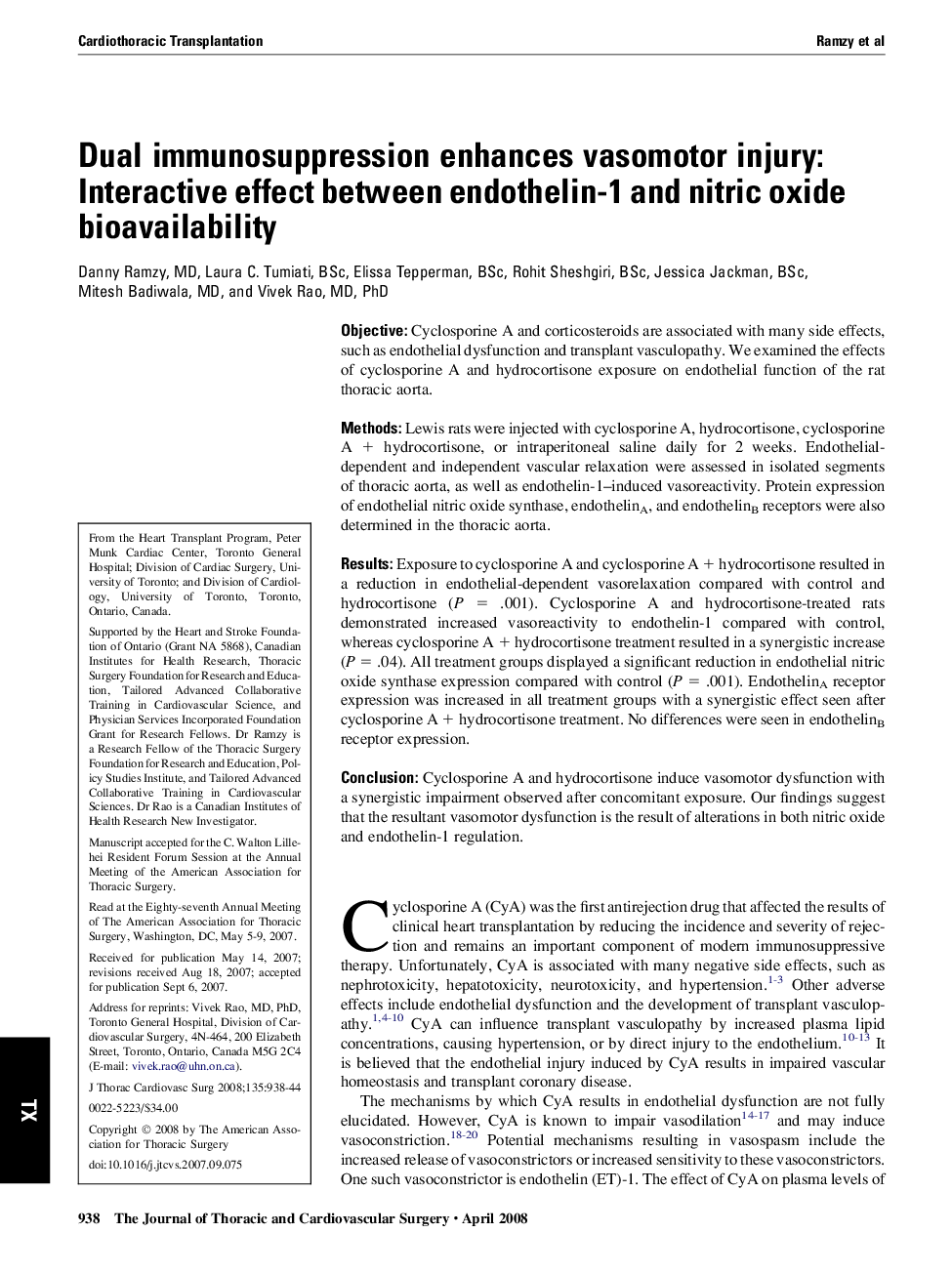| Article ID | Journal | Published Year | Pages | File Type |
|---|---|---|---|---|
| 2986615 | The Journal of Thoracic and Cardiovascular Surgery | 2008 | 7 Pages |
ObjectiveCyclosporine A and corticosteroids are associated with many side effects, such as endothelial dysfunction and transplant vasculopathy. We examined the effects of cyclosporine A and hydrocortisone exposure on endothelial function of the rat thoracic aorta.MethodsLewis rats were injected with cyclosporine A, hydrocortisone, cyclosporine A + hydrocortisone, or intraperitoneal saline daily for 2 weeks. Endothelial-dependent and independent vascular relaxation were assessed in isolated segments of thoracic aorta, as well as endothelin-1–induced vasoreactivity. Protein expression of endothelial nitric oxide synthase, endothelinA, and endothelinB receptors were also determined in the thoracic aorta.ResultsExposure to cyclosporine A and cyclosporine A + hydrocortisone resulted in a reduction in endothelial-dependent vasorelaxation compared with control and hydrocortisone (P = .001). Cyclosporine A and hydrocortisone-treated rats demonstrated increased vasoreactivity to endothelin-1 compared with control, whereas cyclosporine A + hydrocortisone treatment resulted in a synergistic increase (P = .04). All treatment groups displayed a significant reduction in endothelial nitric oxide synthase expression compared with control (P = .001). EndothelinA receptor expression was increased in all treatment groups with a synergistic effect seen after cyclosporine A + hydrocortisone treatment. No differences were seen in endothelinB receptor expression.ConclusionCyclosporine A and hydrocortisone induce vasomotor dysfunction with a synergistic impairment observed after concomitant exposure. Our findings suggest that the resultant vasomotor dysfunction is the result of alterations in both nitric oxide and endothelin-1 regulation.
